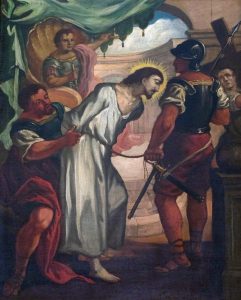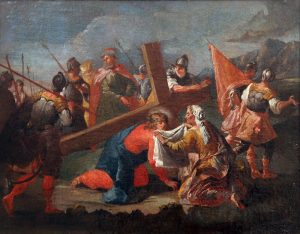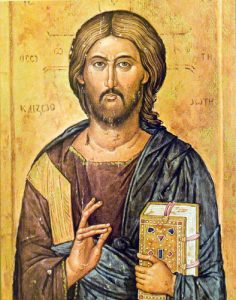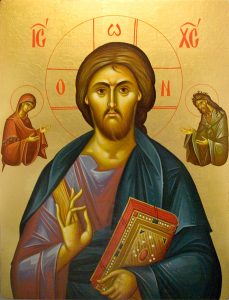Stations, Grief and Counseling
Many individuals suffer in life unfairly. None more than Jesus Christ. His passion and death serve as an example to Christians how to properly offer suffering to God and carry one’s own cross. The Way of the Cross is not an easy choice in life. It involves accepting the will of God and having utter faith in His ultimate plan. As in the life of His own Son, the journey of the cross may not be a pleasant on earth. Christians can meditate on the Stations of the Cross to better learn about suffering and the value of it. It can be a tool to help others appreciate Christ’s suffering and sacrifice and also allow one to see Christ as a model of suffering to follow. Christ tells all, to pick up one’s cross and to follow Him. This may not be the news we wanted but it the is the news we need.
Christian Counselors, pastors, ministers, and priests all face suffering everyday when they speak to many who experience the worst in life, but by pointing to the cross, one can find an example of how to properly carry one’s cross in obedience even to death. Christ as our suffering servant serves as an ultimate example but also shows us the love of God Himself to die on a cross for our sins. This is why it is important to learn the Way of the Cross and to implement it into our spiritual life especially during Lent.
Many who walk the way of the cross, recount many parts of the four Gospels, while other parts stem from tradition or mere common sense. From tradition, meditation and other accounts, many incidents that occurred during Christ’s trek to Calvary can be meditated and prayed upon. It is essential in meditation to think back and suffer with Christ in thanksgiving and sorrow for His infinite gift of life. One can learn so much by this meditation on the stations and become so much closer to Christ in the process.
History of the Stations
So what are the Stations of the Cross? The Stations as a custom fall back to the 4th Century, when Christians could again in public walk the path of Christ in Jerusalem. Upon the meditations, 14 points of emphasis emerged that highlighted Christ’s passion. Again, some of these points of emphasis stemmed from Scripture, while others tradition. Examples include the Christ’s multiple fallings and the pain of the women and Veronica. These would be obvious occurrences and were related through other sources or as understood. For instance, through the many meditations, devotion to the wounds of Christ on His Shoulder from the weight of the cross, or the bleeding of His knees from His many falls grew within the faithful.
The Stations hence were an early Christian devotion that emerged from the East and still to this day for pilgrims is a spiritual exercise. It became a more consistent tradition in the West, when St Francis of Assisi brought the tradition back to his monastery from his trip to the Holy Land. Through St Francis, the journey of Christ’s crucifixion became a more consistent tradition in the West communally and also individually. To this day, the tradition is practiced in Western Churches during Lent with personal devotion any time of the year.
The Stations themselves consist of 14 stations. Through the years different prayers have been compiled to accompany the faithful through the meditation of Christ’s sorrow or as it is also called the Way of Sorrow or Via Dolorosa. The priest, deacon or chosen prayer leader walks to each station usually accompanied by a cross bearer. Usually each station is accompanied with an opening repetitive prayer such as ” We adore you Christ and we bless you-because by Your Holy Cross, You have redeemed the world” Within each station is a meditation and then a series of prayers with the congregation kneeling at certain points facing the particular station within the Church. There have emerged different traditions with different focal points. Some are the more traditional prayers while other ones focus on the thoughts of Mary during her Son’s horrible torture.

The Stations
We will now list the 14 Stations.
The First station is Christ before Pilot.
The Second station portrays Christ accepting His cross
The Third station recounts Christ’s first fall
The Fourth station accounts for Christ’s meeting with His Mother during His long trek to Calvary
The Fifth station refers to Simon helping Christ carry His cross
The Sixth station mentions the wiping of Christ’s face by Veronica
The Seventh station recounts Christ’s Second Fall
The Eighth station remembers the grief of the holy women
The Ninth station recounts Christ’s third fall
The Tenth station is the stripping of Christ garments
The Eleventh station reminds us of Christ’s horrible torment of being nailed to the cross
The Twelfth station is Christ’s crucifixion on the cross
The Thirteenth station is the removal of Christ from the cross
The Fourteenth station is the sealing of the tomb
Commentary
As one can see, the stations carry deep and meditative thoughts regarding Christ’s death. Much of it stems from Scripture. In this way, both Catholics and Protestants can find common ground in their Christian faith in celebrating and meditating upon these divine mysteries. They feed the soul through scripture itself and also remind the soul of the great price Christ paid on the cross. This is also why the stations are so beautiful as an aide to the suffering.
The stations show Christ as the ultimate example of accepting difficulty and hardship and showing obedience to God’s will. They show the love of many towards Christ during His death and also show the pain of Mary, a mother, over the cruel death of her Son. The lessons from the Stations and application to them to difficulty in life are without equal.
The stations bring us to the Holy Land, they take us to the heart of Mary, and help us appreciate the beauty and love of God through His death on the cross. The stations allow us the honor to walk with Christ and to accompany Him and offer Him worship. It teaches us the humility of Christ, the obedience of Christ, and the love of Christ. It shows us the power of suffering in a fallen world and how Christ could turn death into life.
From a practical stand point, it helps us face our own crosses and Calvary and shows us to turn to Christ for help in offering our own cross in this life.
How many can learn from Christ through the Stations?
Wrongly accused?
Carrying unfair burden
Losing a son
Accepting one’s cross
Forgiving one’s enemies
Dying for a friend
Displaying humility and dignity in evil situations
In counseling, the bereaved and persecuted can find solace in the Stations while they mediate upon the sorrows of Christ. Christ as the ultimate example, not only died for our sins, but also taught us through His behavior during His passion how to face evil in this world.

Conclusion
It is very recommended that all Christians participate in the celebration of the stations both communally and individually. It is an act of adoration and thanksgiving to Christ but also a beautiful way to learn and understand the true meaning of Christian suffering.
Whether Catholic, Protestant or non -denominational, the worship of Christ through the meditation upon the Stations is a universal Christian tradition for all to share as Christians in one Baptism.
Please also review AIHCP’s Christian Grief Counseling Program and see if it meets your academic and professional goals The program is online and independent study and open to qualified professionals seeking a four year certification. Those who have already earned the basic Grief Counseling Certification and work in ministry are excellent candidates to earn this secondary certification in Grief Counseling. The certification captures the unique perspective Christianity has on grief and how Christian Counselors, spiritual advisors, pastors, ministers and priests can better help Christians spiritually grieve in this fallen world.
Additional Resources
“History of the Stations of the Cross”. The Passionists. 2020. Access here
“Stations of the Cross”. Francis of Assisi. My Catholic Life! A journey of personal conversion!. Access here
“Praying Stations of the Cross, a Primer for Protestants”. Selah Center. April 9th, 2022. Access here
“Four Reasons to Pray the Stations of the Cross Daily”.




